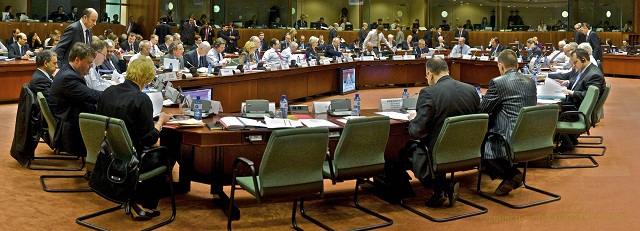In another important yet disappointing step for many, at its last meeting the European Council did not go much further than last June about the banking union. In fact, it delayed its implementation. But there is enough room for optimism right now: a commitment that the banking union will take place, the perception that the euro is not going to break and that Spain finally will ask for financial aid.
Despite the complexities of implementing the EU machinery, optimism about Spain has been the predominant note in the markets last week. Even if Standard and Poor’s downgraded the sovereign leaving it on the edge of no-investing grade.
Several factors triggered the reduction of the risk premium to 370 basis points, the lowest level since last April: Moody’s maintained its rating and avoided placing it on junk grade, and press reports speculated with the possibility that Spain would ask for a “virtual rescue”–so the European Central Bank will buy its debt without going to the European Stability Mechanism, the rescue fund.
And debt auctions were successful: 4.6 million euro in long-term debt were placed. They will cover 94% of the Treasury’s financing needs for the whole year (assuming, though, that deficit target is met).
Crisis has shown that an insufficient degree of integration in the Eurozone could threaten stability, even the EU itself. It was, therefore, decided to establish new mechanisms to monitor and strengthen policy coordination with new tools (the so-called Six Pack, Two Pack, Euro + pact and the “Fiscal Compact”).
As expected, the European Council has not made much progress. Discussions on the draft report for an integration roadmap will continue. A final report is coming up in December.
As for integrated banking supervision, the Council has called on lawmakers to have the legal framework ready by 1 January 2013. Work on the operational implementation will still take place during 2013. The Eurogroup hasn’t defined specific operational criteria that will be guided by the rescue fund ESM direct banking recapitalisation. And doubts about the retroactivity of the ESM direct financial assistance have not been solved.
The agreement on the remaining issues related to the banking union (and general economic matters) seem to have also been postponed to the December European summit.
In June this year the European Council gave a qualitative step further by agreeing to ask the Commission for a proposal for single monitoring mechanism, which once set would directly recapitalise banks. For Spain, it was agreed that the bank recapitalisation would be done through the EFSF, and through the ESM when this latter would become operational.
The possibility of direct recapitalisation of Spanish banks was endorsed by some authorities after the summit. But Germany, Netherlands and Finland showed their opposition in a joint statement. In October the Commission presented its proposal for monitoring only, which was discussed in the last Ecofin. There were considerable disagreements on the scope, timing or structure of ECB’s responsibilities (the Legal Council of the EU believes ECB’s monitoring role does not respect the current EU Treaty).
To invite the president of the European Council (along with the Commission, the Eurogroup and the ECB’s) to draw a detailed roadmap for achieving real economic and monetary union, a preliminary report was last week handled (the final one will be ready in December).
It suggests further integration in four aspects: financial, budgetary, economic and political legitimacy and transparency. Given that it took four years to complete the negotiations of the Treaty of the Union until it was signed in 1992, given the depth of the issues, it is conceivable that this time it won’t be a lot simpler.
The European Union continues its struggling march like a damaged car, undisturbed by the problems of its members and trying to move among difficult balances.
As a proof, the events that will take place in the Eurozone in the coming weeks: municipal elections in Finland (October 28), amortisation of €20 billion of Spanish debt (October 29-31); rescue request of Cyprus (end of October); ESM prepared to make financial contributions (early November) meeting of finance ministers and central bankers from the G20 (3-4 November) U.S. presidential election (November 6) European Commission forecast (November 7), ECB’s meeting (November 8); Eurogroup / Ecofin (12/13 November) and the European Council (November 22-23).






Be the first to comment on "The slow march towards European integration"